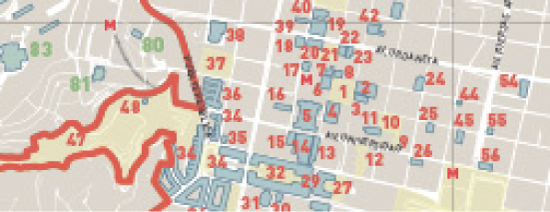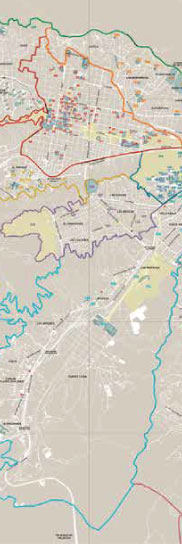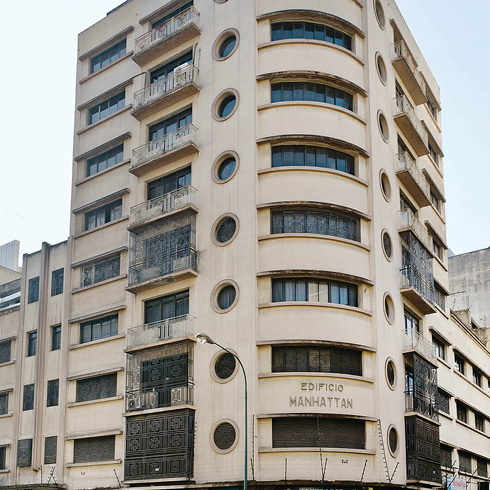IGV-1
In 1928, during the Gómez dictatorship, the state decided to participate in the country’s economic life with its own institutions, creating two development banks, one to encourage the construction of public housing (Banco Obrero) and the other to promote agriculture and livestock, the Banco Agricola y Pecuario (BAP). The National Congress decreed its creation that same year, and the head office was completed, with headquarters in Maracay. It was moved to Caracas in the late thirties, to a three-level rectangular building between party walls, with areas organized around a central courtyard covered by a colored glass plafond surrounded by corridors. The symmetrical façade is made up of two bodies, the first consisting of a marble covered plane, set back on the ground floor, with three access doors in bronze and glass and semicircular arches. The second, consisting of the upper levels and linteled windows, is framed by pilasters. Inside, the noble materials complement decorative elements such as a bas-relief in colored artificial stone called «La Agricultura» (1944), by Alejandro Colina (1901-1976) –author of the statue «Maria Lionza sobre la danta», an example of monumental sculpture in Venezuela– and figures alluding to activities associated to agriculture, livestock and industry. The building is crowned by a cornice and a concrete parapet with moldings that emphasize its art deco character.

IGV-2






